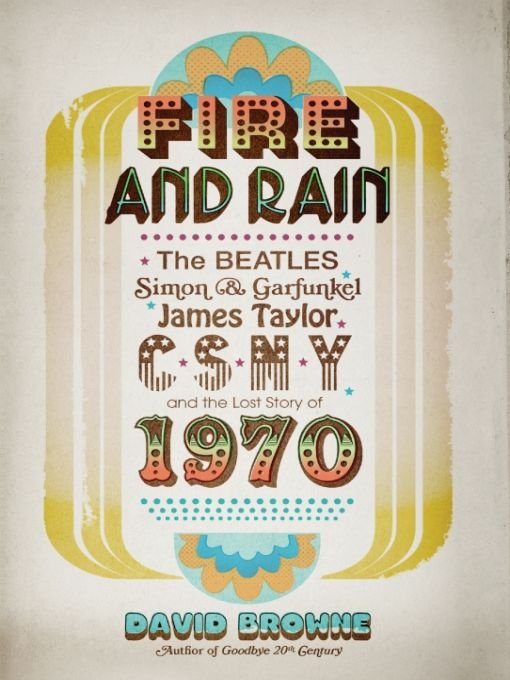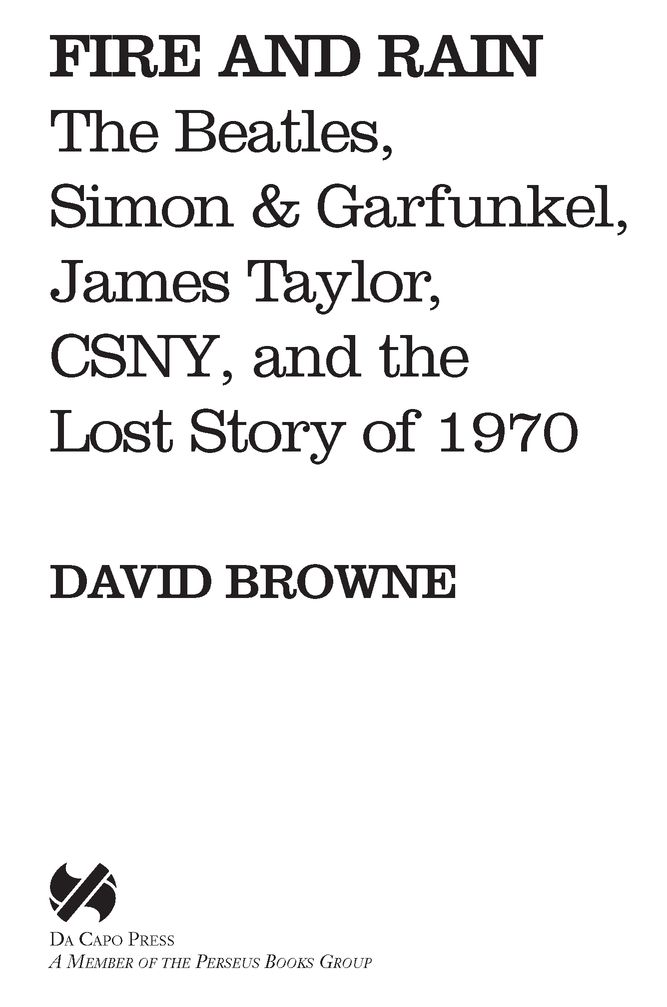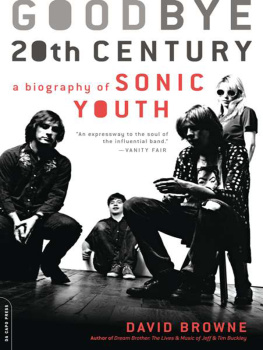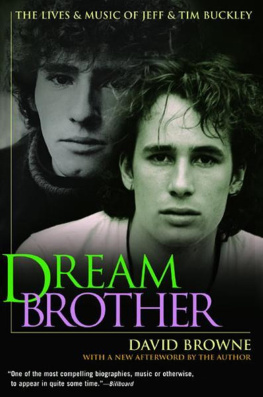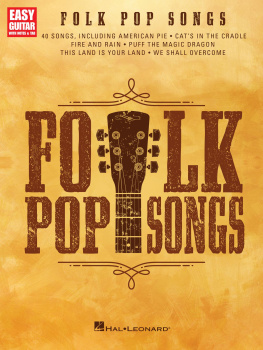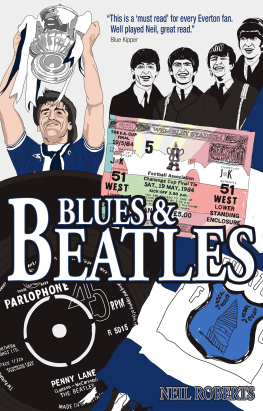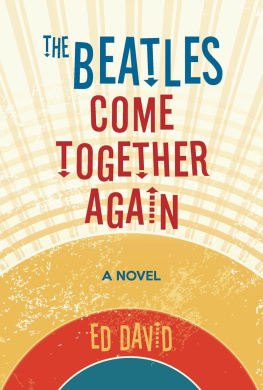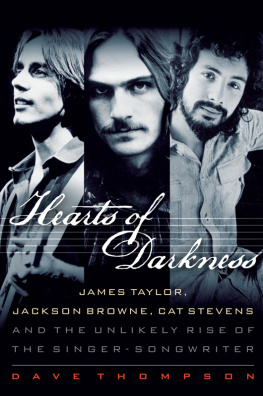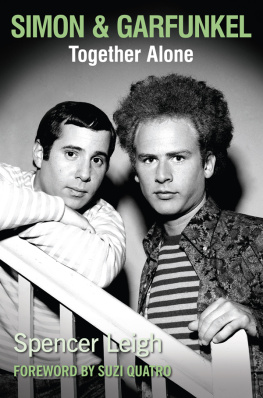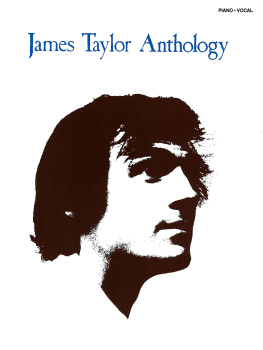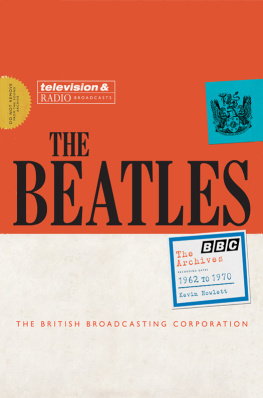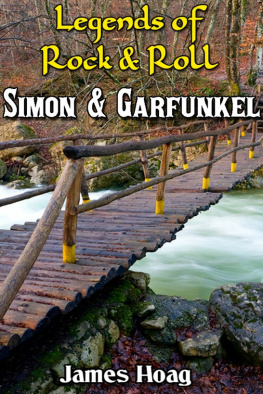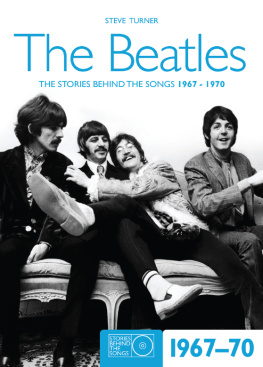Table of Contents
ALSO BY DAVID BROWNE
Goodbye 20th Century: A Biography of Sonic Youth
Dream Brother: The Lives & Music of Jeff & Tim Buckley
Amped: How Big Air, Big Dollars and a
New Generation Took Sports to the Extreme
For my sisters, Linda Virginia and Colette:
Without you and your record collections, this book wouldnt exist.
INTRODUCTION
This book has its roots in that most devastating of traditions, classroom humiliation. One Christmas long ago, my parents asked me for a list of possible gifts, so I gave them the names of a few records. Only months before, for my twelfth birthday, Id received my first LP, making the momentous transition from singles to albumsa twerp-to-cool-kid rite of passage thats since gone the way of the turntable. Since my older sister Linda had already introduced me to the music of Simon and Garfunkel, I asked for one of their albums for my own.
Our first day back after winter break, my classmates and I at our elementary school in Hazlet, New Jersey, filled each other in on our presents. When my turn arrived, I proudly announced Id been gifted with an album. What one, they asked? Simon and Garfunkels Sounds of Silence , I replied. Their aghast looksthe way they pulled back from me as if Id admitted I couldnt wait to get home to start homework every daywas the first sign something had changed. Then one of them said, in a tone equally puzzled and contemptuous, Why do you want that old music? All my surrounding classmates then turned, en masse, away from me.
Yes, the album was six years old, an eternity for a teenager. But from my friends reactions, youd have thought Id been given a collection of Stephen Foster parlor songs from the middle of the previous century. Hadnt the 60s just ended?
I had to admit those years already felt farther away than they were. Repeatedly, those of us who came of age in the 70s were reminded wed missed out on the most astounding era in history, a flowering of culture, society, and mankind like none before (and with girls in mini skirts to boot). Compared to that, our era was an even darker Dark Ages: Welcome to a world of Watergate, KC and the Sunshine Band, 50s nostalgia, and gas rationing, we were told. Personally, I loved hearing early disco songs on the radio and happily watched Fonzie say Aaayyy, yet I still wondered: What happened, and how did it happen? When did the hopeful sensibility of one era give way to the dimmer one of another?
The question has tugged at me ever since. If friends my age are drawn to the 70s, its generally the second halfthe momentous years of punk, Studio 54 disco, the original cast of Saturday Night Live, the films of Lucas and Spielberg. But the messy conflicting signals of the first half of the decade have always haunted me: utopian music like prog rock alongside post-utopian movies like Deliverance, men-pushed-too-far action films like Billy Jack and Walking Tall next to an antiestablishment, pacifist-central TV series like M*A*S*H. And everywhere was the fragmentation of so many of the classic bands of the 60s, replaced by flaxen-haired troubadours sweetly serenading the ladies (the Frisbee Guys, as my friend Tom and I call them). After Sounds of Silence, some of the first LPs I ever owned were all the other Simon and Garfunkel albums (Bridge Over Troubled Water spun regularly on the close-and-play stereo in my bedroom), the Beatles Let It Be, and everything recorded by Crosby, Stills, Nash & Young, together, separately, or in duo form. I didnt have to buy James Taylors Sweet Baby James; I always seemed to hear its low-maintenance melodies drifting out of my sister Colettes bedroom.
Many years later, during a brainstorming session for my next book, my wife suggested I write about the music I loved in my childhood, meaning not just Simon and Garfunkel but Crosby, Stills, Nash & Young, the Beatles, James Taylor, and so on. As she rightly pointed out, I was still giving cursory listens to those musicians new releases, attending their reunion concerts, even interviewing them for one outlet or another. When we wondered aloud whether they had anything in common, one thing came to my mind: 1970. Here was the year in which two of those groups fell apart, one achieved critical cultural mass and also collapsed, and another broke through to a new level of mass acceptance. Further researching those twelve months, I was reminded what a turbulent year 1970 truly was. Id remembered Kent State and Charles Mansons trial, but Id nearly forgotten about the Southern Strategy or the brownstone that exploded in New Yorks Greenwich Village, right down the street from an NYU dorm where I would later live. It was a yeara strangely overlooked one, in some regardsof upheaval and collapse, tension and release, endings and beginnings.
Combined with the music and musicians who provided the soundtrack to those events, a storythe one Id been wondering about since those grade-school yearsstarted to take shape. Many have rightly argued that the dawn of the 70s began in 1972 or 1973, just as the 60s didnt genuinely launch until JFKs inauguration in 1961. Yet the more I thought about it, the more 1970 felt like the lost year: the moment at which the remaining slivers of the idealism of the 60s began surrendering to the buzz-kill comedown of the decade ahead; each subsequent year built on its foundations. I dont pine for my childhood, especially moments of mortification, but I couldnt resist revisiting a moment when sweetly sung music and ugly times coexisted, even fed off each other, in a world gone off course.
PROLOGUE: JANUARY
The new year and new decade blew in colder than expected. In Times Square, the thousands waiting to greet 1970 warded off flurries and temperatures that tumbled unapologetically below twenty degrees. Detroit and Chicago were equally frigid, and even the normally balmy Los Angeles felt the chill, the citys thermometer nose-diving to ten degrees above freezing. The cold snap then migrated across the ocean. Clouds and sleet blanketed London, and by Saturday, January 3, the cold rain and snow showers had arrived and the sun refused to materialize all day.
That morning, a cheery thirty-year-old emerged from the St. Johns Wood train station and began making his way down the tree-lined Grove End Road. Sporting his usual white shirt and tie, Richard Langham strolled briskly for five minutes, finally arriving at 3 Abbey Road, a twostory building with elegant, architrave window and door frames and a small parking lot out front. As always, Langham was greeted by a security guard who flipped open a sign-in book for Langham to initial. Langham then checked the schedule and saw that todays clients, starting at 2 P.M., would be the Beatles.
Like many of his colleagues at EMI Studios, Langham wasnt necessarily thrilled at the news. A staff engineer at the studio, Langham had worked his first Beatle session in 1962, when, as a novice learning his trade, hed helped them unload their equipment into the studio. Langham had trouble telling them apart, with their suits, ties, and nearly identical, just-over-the-ears haircuts, but was struck by their camaraderie and solidarity; he was also charmed when the drummer, Ringo Starr, kept bumming cigarettes off him. Within a few short years, though, Beatle sessions had become torturous ordeals for the studios staff. The Beatles seemed to take forever to put new songs on tape; even when they did, they might easily return the following day and start again. They would frequently bicker, and they didnt seem to care whether they kept the studio staff long past regular hours. From the standpoint of EMI employees like Langham, working with the Beatles felt like a frustrating waste of time, and those assigned to them felt they were being punished for one infraction or another.

